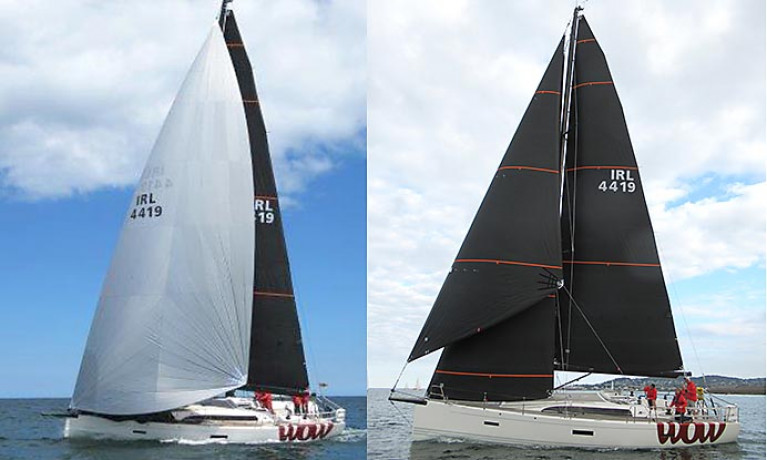UK Sailmakers Ireland’s Barry Hayes looks at the differences between Code Zeros and Flying Jibs on IRC, what are the best angles for each and tips for using them. Both sails are used reaching, but at what angels and why are they effective?
Flying Jibs
Flying jibs are the newest additions to many sail inventories and provide an effective reaching sail selection when the angle is too tight or there is too much wind for a Code Zero. Importantly, there is no penalty on IRC for having a flying jib. The main difference comes into play when you’re cracked off in heavy airs, where you can keep the Flying Jib up powering the boat up without all the heeling the Code Zero would have generated.
Flying jibs are the same size in area as your J 1 headsail and are set flying off the bow on a cable, normally off the end of the bowsprit. The head of the flying jib is normally set level with the top of the forestay. This gives it the best aerodynamic set up as the sail is far enough away from the forestay (a metre or so) so as to not affect the headsail or backwind the mainsail.
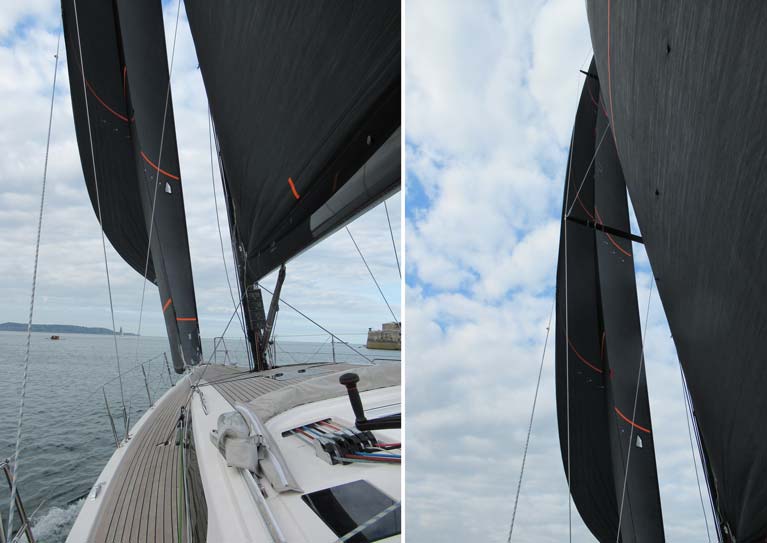
The Flying Jib is less than half the area of the Code Zero resulting in a lot less aerodynamic drag on the sail. The overlap is a lot less as well, so you can push the flying jib much higher and harder than a Code Zero. The halyard tension is quite low compared to a code zero as is the sheet load.
The shape of the Flying Jib is relatively full, normally the same shape as a J 2 headsail with a hollow leech to meet the IRC rule of less the 50% of the LP. The sheeting point is well behind the keel near the genoa winch, but not to the stern of the boat. As you don’t have full control of the sheeting angles for different wind angles, I’ve found that sheeting it at a point ¾ of the way back along the deck is the best spot. If possible, this sheeting location can be adjusted slightly while reaching to open and twist the leech while upwind you want the leech more closed.
The normal upwind sailing angle for a flying jib is around 45 degrees true in up to 8 kts of wind and as broad as 100 degrees for winds of 20 + kts. If you’re sailing broader than 45 degrees in 8 kts, you’re bearing away and adding a lot of speed to the boat. At 60 degrees true in 14 kts, which is too much wind for a Code Zero, you’re normally sailing a full knot faster than with just a headsail.
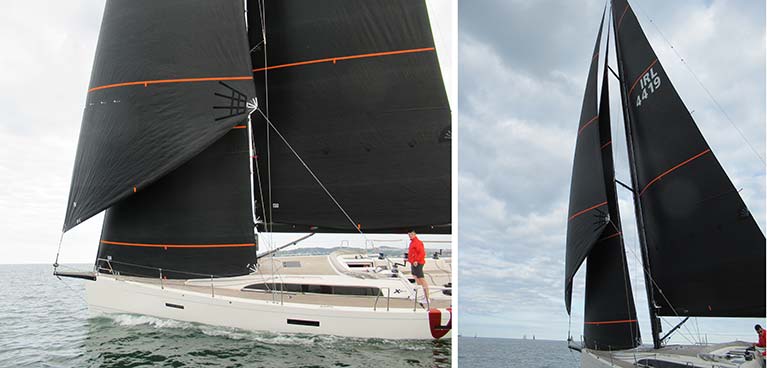
A Flying Jib always hoisted and dropped to windward. It’s set using a cable and furler system with a ratchet at the bottom. The clew will usually have a Velcro patch it to keep the sail closed once it’s furled tightly. This lets you leave it up so you can open or close the sail when it’s needed. I normally attach only one sheet to the sail as you never tack it without furling.
Code Zeros

Today’s Code Zeros are the go-to sail for offshore sailing because they are versatile and easy to handle. One of the great uses of the code zero is at night or offshore when you are racing. It’s an excellent sail when it’s too windy to hoist the kite, and, when you broach, you just furl the sail up and get back on the road.
Nearly all Code Zeros are set and doused using a top-down furling system with a cable in the luff. The reason for top-down is that it gets the furl tight onto the cable so there isn’t a big roach hanging out of the leech when its furled. You can hoist a Code Zero and leave it up, furling and unfurling it as needed.
The Code Zero is much bigger than a Flying Jib and it has double the power. The sail is normally sheeted to the same point as the Flying Jib, ¾ way back the deck by the genoa winch, with one sheet on the sail for ease of use. This also keeps the spinnaker sheets free to use as needed.

The true wind angles and wind speed range of most Code Zeros are from 45 degrees in 6 kts. to as broad as 110 degrees in 20 kts. You can also use them at lower angles in heavy airs, like 160 degrees in 30+ kts., and you can simply roll it up if you get into trouble.
The design of the Code Zero is similar to a flat A3 asym with a mid-girth greater than 75% so it fits in the IRC rule. The leech carries quite a bit of twist allowing you to open and close the leech as need.
In this video attached you can see a top-down furling Code Zero
You can see the head of the sail furling onto the cable while the tack stays free allowing the main body of the sail to create a tight furl on the cable.
Top benefits:
Flying Jib
• 45 to 100 degrees true
• Cable and sheet low load.
• Can but used in higher wind strengths and angles
Code Zero
• 45 to 110 degrees true or 130+ in heavy air
• Cable and sheet high load.
• Can but used in lower wind strengths and angles
The cable and the furler you use in both sails are the most important part of the system. Some furlers can cost more than the sail, and they also may not work as effectively as they say they can. It’s always best to buy a furler that has a top-down option specified.
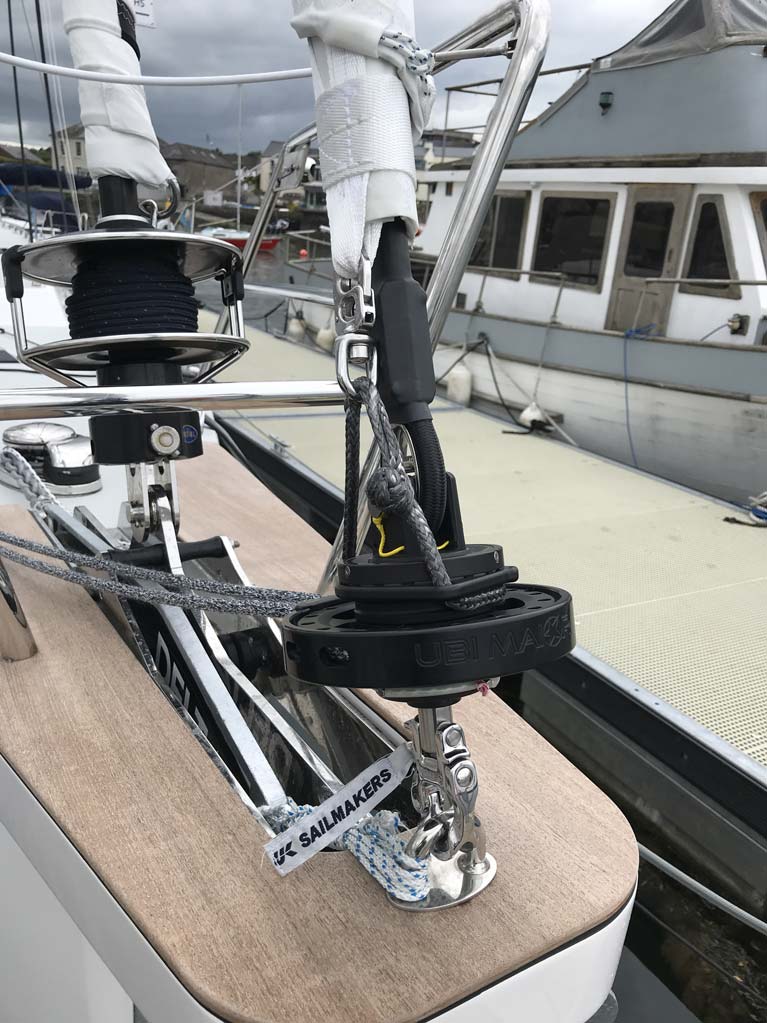 Ubi Maior FR125 RWM furler
Ubi Maior FR125 RWM furler
The best value for money is the Ubi Maior furler. This furler comes with a ratchet lock and top-down option. The ratchet lock means you can stop the furler, open and close the furl at any point with the quick and easy ratchet trigger.
The cable has to be a torsion cable. Now there are lots of these on the market but only 10% of them do what they say on the box. Most are just ropes that are called torsion cables. If you turn the cable at the bottom, then the top should turn at the same time--this is an anti-torsion cable. We normally recommend Hampidhan Dynex Pro Furling cable, great value and it will do exactly what it says on the box.
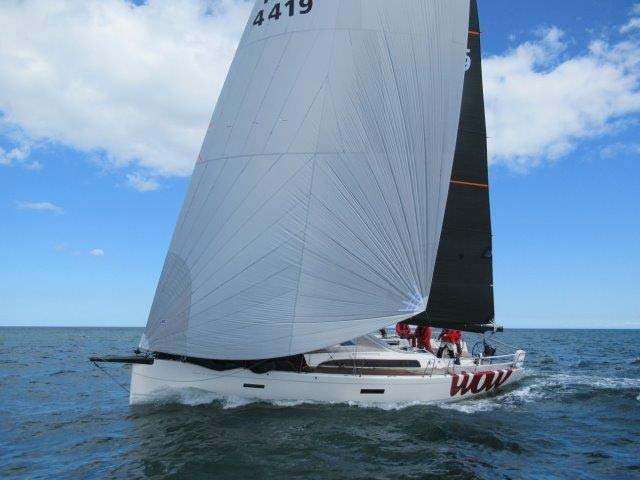
Halyard Tension
This is a common question regarding Flying Jibs and Code Zeros. How much tension does the cable need to furl? With a proper cable then you can use it with low or high tension. If you’re using a rope cable then it needs to be bar tight for the system to work. For example, if it’s not tight then the cable can twist and tear the sail. With a Hampidhan Dynex Pro Furling cable, for example, you can have the halyard soft or hard and still furl the sail without any issue.



























